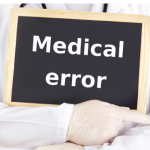In a December 2019 editorial in the Journal of the American Medical Association, the implications of diagnostic error were explored through the story of two parents, both medical professionals, who sought a diagnosis for their sick child.1 Their son saw specialist after specialist and underwent repeated procedures, but for years was left without an explanation for or alleviation of his symptoms. Eventually, he was diagnosed with celiac disease.
One of the author’s main critiques is that the myriad metrics tracked and reported in U.S. healthcare don’t capture what really brought value: the boy’s ability to live his best life.
Incorrect and delayed diagnosis led to the boy’s years of suffering; what if those missed opportunities could be captured, learning opportunities created and root causes analyzed? Such instances of diagnostic error are increasingly recognized as being measurable and preventable.
Diagnostic Art
Making the wrong diagnosis or missing the correct one is something that has likely gnawed at most clinicians at some point, particularly in such a heavily cognitive field as rheumatology. Errors and missed diagnoses are often hard to admit. “How could I have missed that?” you may ask yourself.
Or perhaps you are the one to make the correct diagnosis, fitting together the pieces others overlooked.
If we are to improve as diagnosticians, it is imperative that we understand how it is that we reveal what ails our patients in the first place. We often fail to recognize all the moving pieces that must work in harmony for us to arrive at the correct conclusion:
- Care team members must gather, interpret and synthesize information as diseases evolve over time, all while intrinsic and extrinsic factors affect our decision making.
- Intrinsic factors include the knowledge and experience providers possess to interpret information, and both cognitive and personal biases.
- Examples of external factors include an imaging study ordered or interpreted incorrectly, altering one’s working diagnosis, or a distracting environment that leads to a missed piece of information.
Each step in the process, from the initial gathering of information to the final communication of a diagnosis, represents opportunities for errors.
Quality Improvement
Diagnostic error has become more prevalent in the national patient safety conversation. In 2015, the National Academy of Medicine (NAM), formerly the Institute of Medicine (IOM), published Improving Diagnosis in Health Care. This publication, a continuation of the IOM’s previous reports, To Err Is Human and Crossing the Quality Chasm, builds on the foundations of the modern patient safety movement. In it, NAM defines diagnostic error as the failure to “a) establish an accurate and timely explanation of the patient’s health problem(s), or b) communicate that explanation to the patient.”2
Although measuring the incidence of diagnostic error is challenging, the data we have suggest diagnostic errors are prevalent. Singh et al. estimated 12 million Americans are affected by diagnostic error each year in the ambulatory setting alone.3 The NAM report claims almost all Americans will experience a diagnostic error at some point.2 With such a pervasive problem, it is paramount that we better understand why lapses in the diagnostic process occur and the challenges in addressing them.
William Edwards Deming, one of the founders of the quality improvement movement, said, “Without data, you’re just another person with an opinion.”
The National Academy of Medicine defines diagnostic error as the failure to ‘a) establish an accurate and timely explanation of the patient’s health problem(s), or b) communicate that explanation to the patient.’
One of the first steps in reducing errors is recognizing them in the first place, so they can be instructive; this can be particularly difficult in rheumatology. The manifestations of rheumatic diseases can be highly variable. Further, we often lack a gold standard for definitive diagnosis. Defining a correct or incorrect diagnosis in this setting can be challenging.
Our ability to recognize a diagnostic error becomes further complicated when patients transfer care or seek second opinions. By the time our inaccurate diagnosis is recognized, we may no longer have contact with the patient.
It is also important to recognize the system in which we work as a source of error.
- Complicated and fragmented electronic medical records (EMRs) can make it difficult to deliver care.
- Short visit times interfere with our ability to tease out the nuances of a patient’s symptoms.
- Delays in evaluations by other specialists due to long wait times may hinder our ability to complete the picture of a patient’s illness.
These are just a few examples of how external factors can hinder our ability to make accurate diagnoses. Yet within this complex system, opportunities exist:
- Recognizing all members of the care team as resources for identifying missed information;
- Leveraging the EMR for improved communication;
- Dedicated time for case review with colleagues.
A starting point for tackling diagnostic error is understanding that, although it often feels our face-to-face interaction with patients is the only step in diagnosis, the environment in which we provide care plays a bigger role than we realize.
Taking time to reflect when we are able to identify an obvious diagnostic error is a crucial step. In the busy hustle of clinical practice, moments for reflection can be fleeting. However, there are ways to formalize discussion about diagnostic errors we have been a part of or observed.
Morbidity and mortality conferences, traditionally used for deliberating system breakdowns in an undesired outcome, represent an ideal opportunity for dissecting diagnostic errors.2 These conversations don’t need to involve patient harm and can highlight near-misses in which a diagnostic error was avoided.
When structured conferences are not feasible, even informal reflection among colleagues represents an opportunity to improve our diagnostic acumen.
Personal Reflection
As a fellow, I took care of a man in his 70s who we diagnosed with systemic sclerosis and scleroderma renal crisis. He first started having swelling in his hands about six months earlier. He saw two different rheumatologists: The first diagnosed him with rheumatoid arthritis (RA), and the second followed along with this diagnosis and prescribed methotrexate and prednisone. The patient’s primary complaint had been stiffness and swelling in his hands, but he also had developed Raynaud’s phenomenon and skin tightening.
I am only able to speculate on what may have contributed to the previous incorrect diagnosis. Did the first rheumatologist have enough time to obtain a satisfactory history? Did the complaint of hand swelling activate heuristics that made them automatically jump to RA? Did the patient’s inadequate response to treatment get taken into account during follow-up? It’s likely that his disease evolved and that time played a role in our ability to arrive at scleroderma when those before us did not see the telltale signs.
Seeing the end result of this diagnostic error served as a learning experience for me, but how do we make it so that all of the providers involved in his previous care can learn from the case? Can we do more to educate our colleagues about what we have witnessed so they don’t make similar mistakes?
Recognizing that errors in medicine are an aspect of complex systems, rather than solely individual fault, has been at the heart of the patient safety movement. The same is necessary to make progress in reducing diagnostic error. We must overcome the feeling of guilt or blame that may come with a missed diagnosis and remain open to reflecting on the diagnostic process that led to that outcome. This will lead to changing our own practice and the system in which we work to reduce such instances in the future.
Improving our diagnoses will, ultimately, improve the care we provide.
 Richard Zamore, MD, MPH, is a rheumatologist at Lahey Hospital and Medical Center, Burlington, Mass., and completed a rheumatology fellowship at the Hospital of the University of Pennsylvania, Philadelphia.
Richard Zamore, MD, MPH, is a rheumatologist at Lahey Hospital and Medical Center, Burlington, Mass., and completed a rheumatology fellowship at the Hospital of the University of Pennsylvania, Philadelphia.
References
- Khorana MM, Khorana AA. Measuring quality. JAMA. 2019 Dec 3;322(21):2077–2078.
- Baolgh EP, Miller BT, Ball JR (eds). (2015) Improving Diagnosis in Health Care. Washington, D.C: National Academies Press.
- Singh H, Sittig DF. Advancing the science of measurement of diagnostic errors in healthcare: The Safer Dx framework. BMJ Qual Saf. 2015 Feb;24(2):103–110.
Note: This article is the opinion of the author and does not necessarily represent the views of the ACR or The Rheumatologist.


